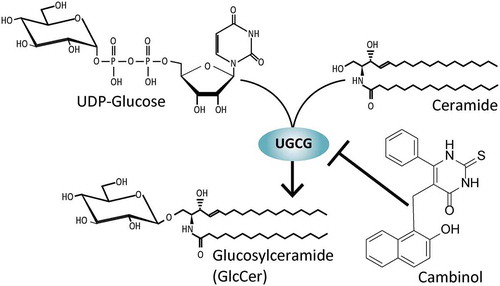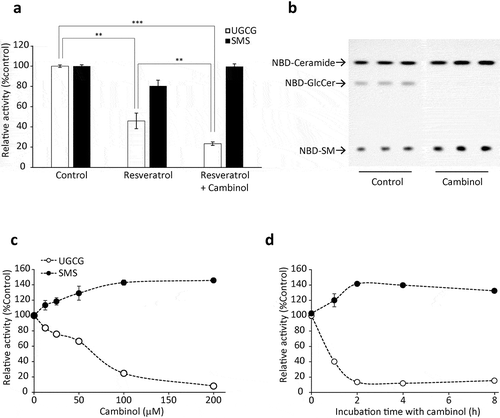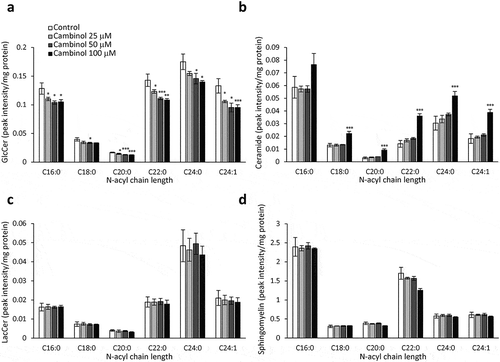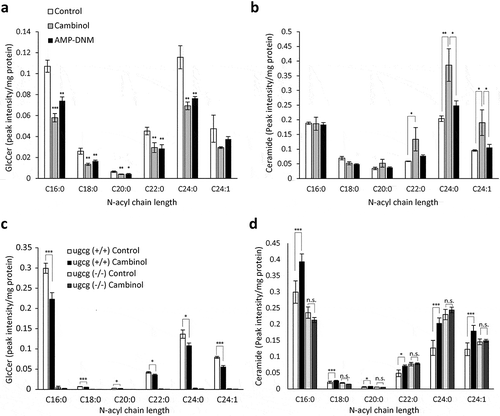Figures & data

Figure 1. Effect of cambinol on the cellular UGCG activity.

Figure 2. Measurement of sphingolipid levels of cambinol-treated cells.

Figure 3. Inhibitory efficiency and mechanism of cambinol on UGCG activity.

Figure 4. Dependency of histidine 193 in UGCG for the inhibition by cambinol.

Figure 5. Involvement of UGCG in ceramide accumulation caused by cambinol.

